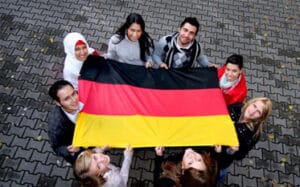USA Immigration
Family Migration
Family-Based Immigrant Visas
Two groups of Family Visa USA categories, including immediate relatives and family preference categories and you can also understand the USA family visa processing time provided under the provisions of United States immigration law, specifically the Immigration and Nationality Act (INA).
Immediate Relative Immigrant Visas (Unlimited): These visa types are based on a close family relationship with a United States (U.S.) citizen described as an Immediate Relative (IR). The number of immigrants in these categories is not limited each fiscal year. Immediate relative visa types include:
- IR-1: Spouse of a U.S. Citizen
- IR-2: Unmarried Child Under 21 Years of Age of a U.S. Citizen
- IR-3: Orphan adopted abroad by a U.S. Citizen
- IR-4: Orphan to be adopted in the U.S. by a U.S. citizen
- IR-5: Parent of a U.S. Citizen who is at least 21 years old
Family Preference Immigrant Visas (Limited): These visa types are for specific, more distant, family relationships with a U.S. citizen and some specified relationships with a Lawful Permanent Resident (LPR). There are fiscal year numerical limitations on family preference immigrants, shown at the end of each category. The family preference categories are:
Family First Preference (F1): Unmarried sons and daughters of U.S. citizens, and their minor children, if any. (23,400)
Family Second Preference (F2): Spouses, minor children, and unmarried sons and daughters (age 21 and over) of LPRs. At least seventy-seven percent of all visas available for this category will go to the spouses and children; the remainder is allocated to unmarried sons and daughters. (114,200)
Family Third Preference (F3): Married sons and daughters of U.S. citizens, and their spouses and minor children. (23,400)
Family Fourth Preference (F4): Brothers and sisters of U.S. citizens, and their spouses and minor children, provided the U.S. citizens are at least 21 years of age. (65,000)
Note: Grandparents, aunts, uncles, in-laws, and cousins cannot sponsor a relative for immigration.
Numerical Limitations for Limited Family
Based Preference Categories Whenever the number of qualified applicants for a category exceeds the available immigrant visas, there will be an immigration wait. In this situation, the available immigrant visas will be issued in the chronological order in which the petitions were filed using their priority date. The filing date of a petition becomes what is called the applicant’s priority date. Immigrant visas cannot be issued until an applicant’s priority date is reached. In certain categories with many approved petitions compared to available visas, there may be a waiting period of several years, or more, before a priority date is reached.
Returning Resident Immigrant Visas (SB)
A lawful permanent resident (LPR) who has remained outside the United States, for longer than twelve months, or beyond the validity period of a re-entry permit, will require a new immigrant visa to enter the United States and resume permanent residence. A provision exists under U.S. visa law for the issuance of a returning resident special immigrant visa to an LPR who remained outside the United States due to circumstances beyond his/her control.
The First Step toward an Immigrant Visa: Filing a Petition
As the first step, a sponsoring relative must file a Petition for Alien Relative, Form I-130 with the Department of Homeland Security, U.S. Citizenship and Immigration Services (USCIS). In certain circumstances, a U.S. citizen living abroad can file an immigrant visa petition outside the United States.
U.S. Sponsor Minimum Age Requirement
U.S. citizens must be age 21 or older to file petitions for siblings or parents. There is no minimum age for a sponsor to file petitions for all other categories of family based immigrant visas. However, a U.S. citizen or lawful permanent resident (LPR) must be at least 18 years of age and have a residence (domicile) in the United States before he or she can sign an Affidavit of Support, Form I-864 or I-864-EZ. This form is required for an immigrant visa for a spouse and other relatives of U.S. sponsors.
Is Residence in the U.S. Required for the U.S. Sponsor?
Yes. As a U.S. sponsor/petitioner, you must maintain your principal residence (also called domicile) in the United States, which is where you plan to live for the foreseeable future. Living in the U.S. is required for a U.S. sponsor to file the Affidavit of Support, with few exceptions.
If You Were an LPR and Are Now a U.S. Citizen
If you filed a petition for your spouse and/or children when you were a lawful permanent resident (LPR) and you are now a U.S. citizen, the type of immigrant visa that your family members can receive will change.
Effect on spouses and minor children
If you filed a petition for your spouse or minor children (under age 21 and unmarried) while you were an LPR, the visa category was family second preference (F2A). When you become a U.S. citizen, NVC will upgrade the petition to an immediate relative (IR) visa category. This benefits your immigrating family member(s) because there are no limits on the number of visas that can be issued each year in the IR categories.
Applicants whose case is at a U.S. Embassy or Consulate overseas should ask the embassy to submit a request on their behalf. The consular officer will forward the request and adjudicate the visa application in the F2B category only upon receipt of USCIS’s approval.
Next Steps – Fees, Affidavit of Support, and Visa Application
After USCIS approves the petition, it is sent to the National Visa Centre (NVC). Once received, the NVC will assign a case number for the petition. For family preference immigrant visa cases, when an applicant’s priority date meets the most recent qualifying date, the NVC will instruct the applicant to complete Form DS-261, , the NVC will request that the applicant submit the necessary immigrant visa documents, including the Affidavit of Support, application forms, civil documents, and more.
Required Documentation
In general, the following documents are required:
Passport(s) valid for six months beyond the intended date of entry into the United States, unless longer validity is specifically requested by the U.S. Embassy/Consulate in your country.
Affidavit of Support (Form I-864, I-864A, I-864 EZ, or I-864W, as appropriate) from the petitioner/U.S. sponsor. In addition to this guidance, tips are available for completing the affidavit of support (tips for I-864, tips for I-864A, tips for I-864EZ, and tips for I-864W).
Form DS-260, Immigrant Visa and Alien Registration Application.
Two (2) 2×2 photographs. See the required photo format explained in Photograph Requirements.
Civil Documents for the applicant (and petitioner in F4 cases). See Documents the Applicant Must Submit for more specific information about documentation requirements, including information on which documents may need to be translated. The consular officer may ask for more information during your visa interview. Bring your original civil documents (or certified copies), such as birth and marriage certificates, as well as legible photocopies of the original civil documents, and any required translations to your immigrant visa interview. Original documents and translations can then be returned to you.
Completed Medical Examination Forms – These are provided by the panel physician after you have completed your medical examination and vaccinations
Visa Interview
Once the NVC determines the file is complete with all the required documents, they schedule the applicant’s interview appointment.
Our deliverables
- Guiding in all aspects of the Family Visa application process till the time entire family gets the visa.
- Complete documentation assistance for the visa purpose.
- Filling up the Application forms.
- Making necessary covering letter to support the genuinely intention of travel.
- Taking Appointments to submit the Application @VFS or the respective embassy if required.
- Mock calls for interview process if necessary.

























